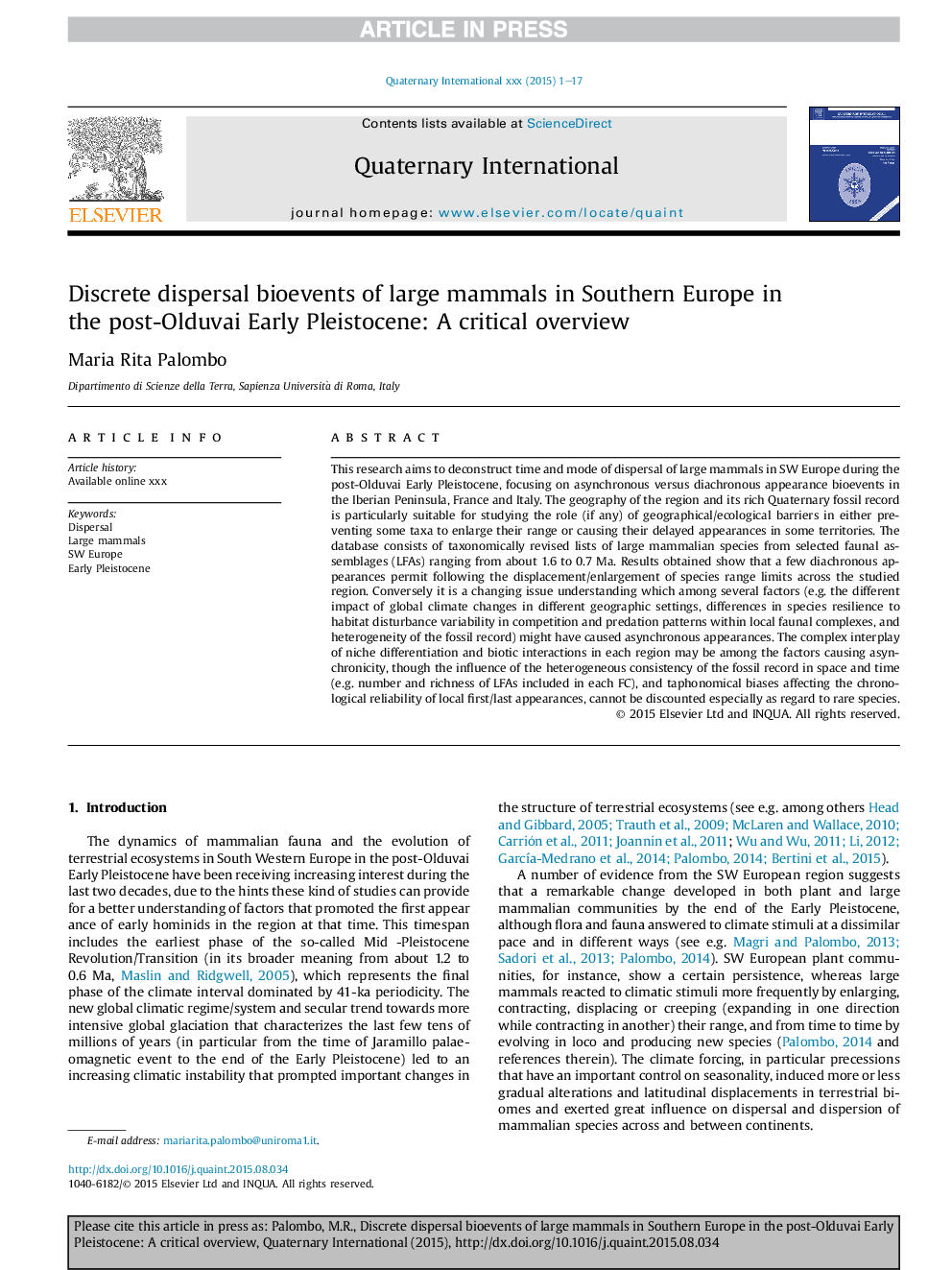| Article ID | Journal | Published Year | Pages | File Type |
|---|---|---|---|---|
| 5113742 | Quaternary International | 2017 | 17 Pages |
Abstract
This research aims to deconstruct time and mode of dispersal of large mammals in SW Europe during the post-Olduvai Early Pleistocene, focusing on asynchronous versus diachronous appearance bioevents in the Iberian Peninsula, France and Italy. The geography of the region and its rich Quaternary fossil record is particularly suitable for studying the role (if any) of geographical/ecological barriers in either preventing some taxa to enlarge their range or causing their delayed appearances in some territories. The database consists of taxonomically revised lists of large mammalian species from selected faunal assemblages (LFAs) ranging from about 1.6 to 0.7Â Ma. Results obtained show that a few diachronous appearances permit following the displacement/enlargement of species range limits across the studied region. Conversely it is a changing issue understanding which among several factors (e.g. the different impact of global climate changes in different geographic settings, differences in species resilience to habitat disturbance variability in competition and predation patterns within local faunal complexes, and heterogeneity of the fossil record) might have caused asynchronous appearances. The complex interplay of niche differentiation and biotic interactions in each region may be among the factors causing asynchronicity, though the influence of the heterogeneous consistency of the fossil record in space and time (e.g. number and richness of LFAs included in each FC), and taphonomical biases affecting the chronological reliability of local first/last appearances, cannot be discounted especially as regard to rare species.
Related Topics
Physical Sciences and Engineering
Earth and Planetary Sciences
Geology
Authors
Maria Rita Palombo,
